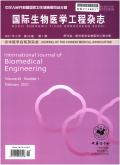Research progress in mechanical thrombectomy device for deep venous thrombosis treatment
引用次数: 0
Abstract
Mechanical thrombectomy is a minimally invasive interventional method. Embolization device is too close to the blood vessel wall and venous valve in clinical applications, and it can cause blood vessel damage when it is sucked into the lumen. Embolization device is easy to cause hemolysis. Optimal design can reduce the damage to red blood cells, but it cannot be completely avoided; Shedding emboli can complicate the pulmonary artery. The clinical application studies of mechanical thrombectomy devices in the world was reviewed, including 74 experimental studies and 166 clinical application studies. The current status and causes of vascular injury, hemolysis and pulmonary embolism caused by mechanical thrombectomy were analyzed. This paper aims to make recommendations for the optimization of mechanical thrombectomy devices. Key words: Deep venous thrombosis; Mechanical thrombectomy device; Optimization机械式血栓切除器治疗深静脉血栓的研究进展
机械血栓切除术是一种微创介入方法。在临床应用中,栓塞装置离血管壁和静脉瓣膜太近,当它被吸入管腔时会导致血管损伤。栓塞装置容易引起溶血。优化设计可以减少对红细胞的损伤,但不能完全避免;脱落的栓塞会使肺动脉复杂化。综述了国内外机械血栓切除器的临床应用研究,包括74项实验研究和166项临床应用研究。分析了机械血栓切除术引起血管损伤、溶血和肺栓塞的现状及原因。本文旨在为机械血栓切除装置的优化提供建议。关键词:深静脉血栓形成;机械血栓切除装置;优化
本文章由计算机程序翻译,如有差异,请以英文原文为准。
求助全文
约1分钟内获得全文
求助全文

 求助内容:
求助内容: 应助结果提醒方式:
应助结果提醒方式:


